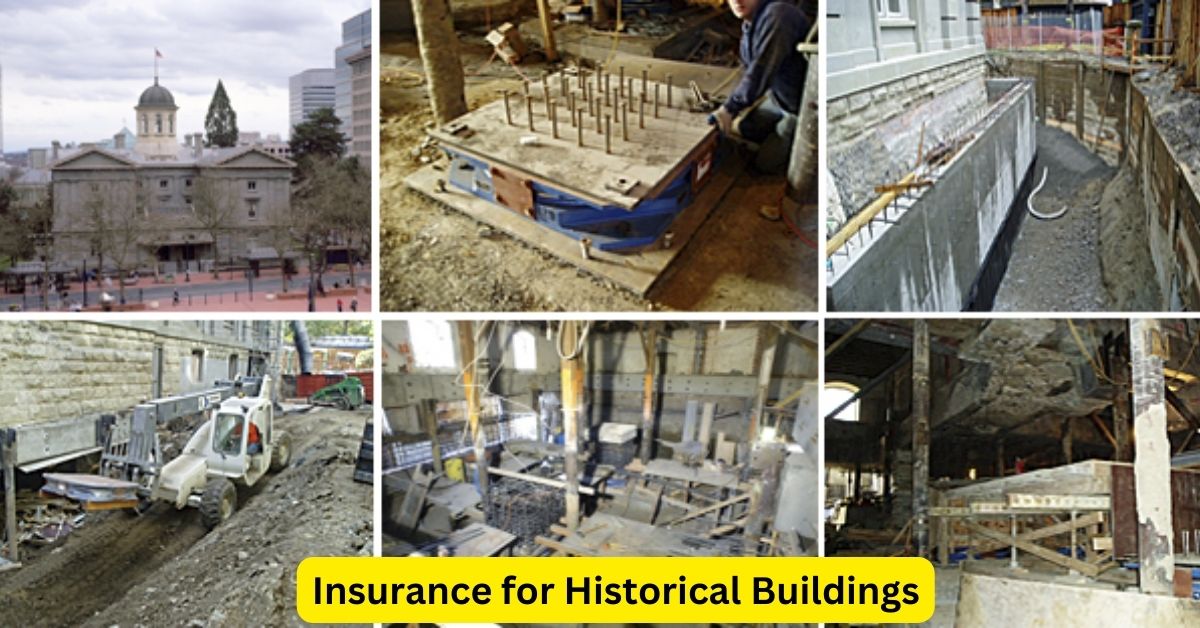Historical buildings are treasures that tell stories of the past, showcasing architectural styles, cultural heritage, and historical significance. Whether it’s a charming Victorian home, a centuries-old church, or a landmark commercial building, these structures require specialized care and protection. Insurance for historical buildings is essential to preserve these assets while safeguarding against the unique risks they face. This article explores the importance of insurance for historical buildings and the types of coverage available to protect them.
Understanding the Unique Risks of Historical Buildings
Historical buildings, by their very nature, present a set of challenges and risks that differ from those of modern structures. Here are some key factors to consider:
- Aging Structures: Many historical buildings are constructed with materials and techniques that are no longer in use, making them vulnerable to wear and tear, decay, and structural damage. Over time, these aging structures may require special maintenance and repair.
- Valuable Artifacts and Features: Historical buildings often house valuable artifacts, antique fixtures, and architectural features that are irreplaceable. Protecting these items is crucial to preserving the building’s historical value.
- Compliance with Building Codes: Upgrading historical buildings to meet modern safety codes and regulations can be challenging. This includes installing fire suppression systems, electrical rewiring, and other safety measures while maintaining the building’s historical integrity.
- Natural Disasters and Environmental Hazards: Historical buildings may be more susceptible to damage from natural disasters such as earthquakes, floods, and fires. Environmental factors like humidity, mold, and pests can also pose significant threats.
- High Restoration Costs: The specialized skills and materials required to restore historical buildings often lead to higher repair and restoration costs than those for contemporary buildings.
Types of Insurance Coverage for Historical Buildings
To adequately protect historical buildings, owners should consider a variety of insurance options tailored to their unique needs:
- Property Insurance: This basic coverage protects the building’s structure and contents against perils such as fire, vandalism, and theft. Given the age and value of historical buildings, property insurance should be comprehensive, covering the full cost of restoring the building to its original condition.
- Replacement Cost Coverage: Historical buildings often require specialized materials and craftsmanship for repairs, which can be costly. Replacement cost coverage ensures that repairs and restorations can be carried out using materials and methods that match the original construction.
- Fine Arts and Contents Insurance: Many historical buildings house valuable antiques, artwork, and furnishings. Fine arts and contents insurance provides coverage for these items, protecting them against loss, theft, or damage.
- Ordinance or Law Coverage: This insurance helps cover the costs of upgrading the building to meet current building codes and regulations, which can be significant for historical properties.
- Liability Insurance: Protects against legal claims arising from accidents or injuries that occur on the property. This coverage is crucial for historical buildings that are open to the public, such as museums, galleries, or event venues.
- Natural Disaster Coverage: Depending on the location, owners may need additional coverage for specific natural disasters like earthquakes or floods, which are often excluded from standard property insurance policies.
The Importance of Insurance for Historical Buildings
Insurance for historical buildings is vital for preserving the cultural and historical heritage these structures represent. With the right insurance coverage, owners can ensure that their buildings remain protected against unforeseen risks, allowing them to focus on maintaining and celebrating their historical significance.
In conclusion, insurance for historical buildings plays a crucial role in managing the unique risks and challenges these structures face. By investing in comprehensive coverage, owners can protect their investments, preserve the building’s historical value, and contribute to the ongoing appreciation of our cultural heritage. Whether a historic home, church, or commercial landmark, having the appropriate insurance safeguards these treasures for future generations to enjoy and learn from.

